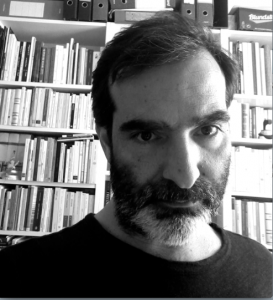
Rinaldo Censi
Rinaldo Censi writes, translates and programmes films, and is interested in pushing back the boundaries of the discipline. He has written a book on the Italian stars of silent films (Formule di Pathos, 2008) and one on Yervant Gianikian and Angela Ricci Lucchi (2013). He has curated exhibitions on different filmmakers, including Charley Bowers, Pedro Costa, Peter Tscherkassky, Karl Kels and Jean Eustache.
Author's books
Copie originali
Iperrealismi tra pittura e cinema
Rinaldo Censi
pages: 76 pages
Hyperrealism is usually taken to mean the current in painting that represents reality by starting from a photographic image which is enlarged as much as possible and then drawn, in an attempt to get as close as possible to life-like perception. However the phenomenon has developed in various ways and to date there is no single definition of hyperre
